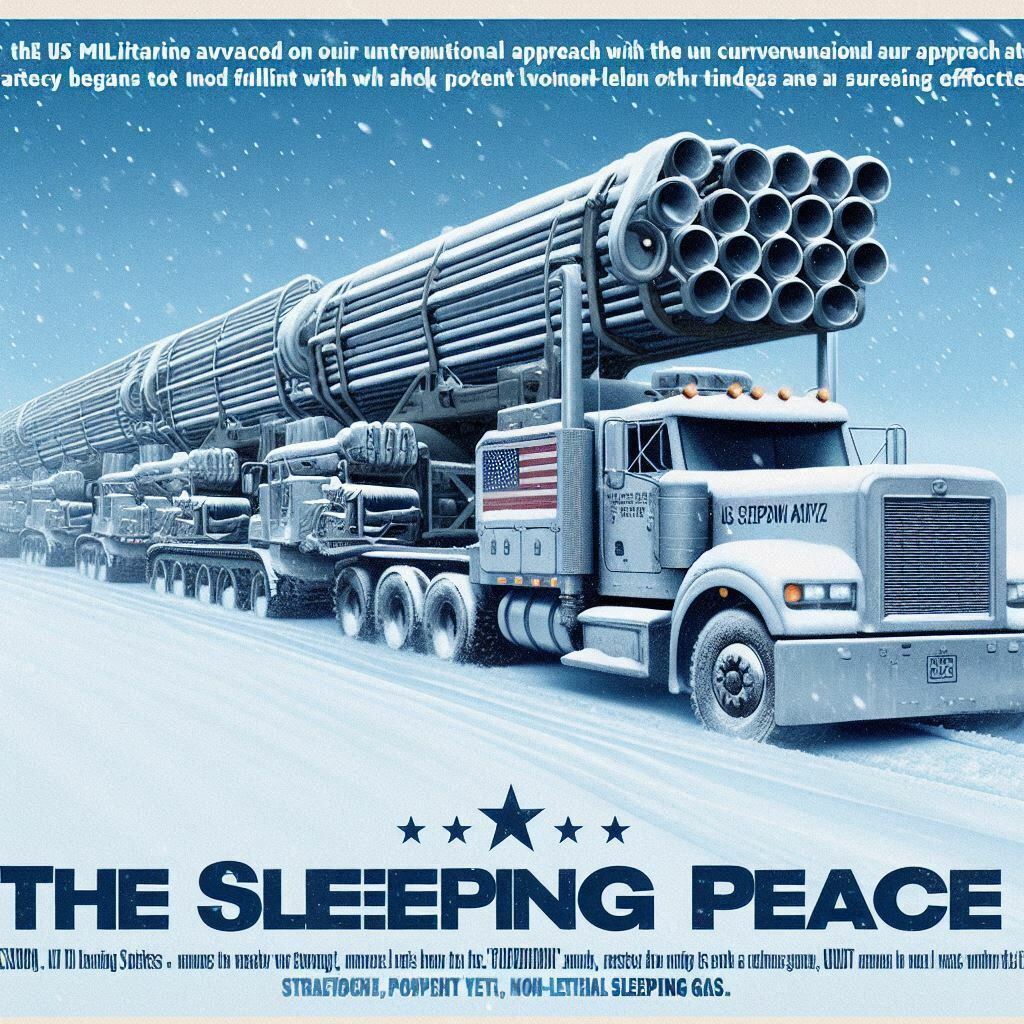THE STAGE 32 LOGLINES
Post your loglines. Get and give feedback.

SLEEPING PEACE AND THE END OF THE NO FUN PATROL
By Charles Baldwin
**Title:** "Sleeping Peace"
**Logline:** In a bold bid to end global conflict, the US military deploys non-lethal sleeping gas on the battlefield, sparking a worldwide ceasefire and igniting unexpected pathways to peace.
SYNOPSIS:
As the US military advances with their unconventional approach, deploying massive snow cannons mounted on various vehicles and trains, the strategy begins to unfold with surprising effectiveness. These snow cannons are not designed to unleash snow but are equipped with tanks filled with a potent yet non-lethal sleeping gas.
1. Sleeping Gas Deployment: The military carefully targets and blankets areas near the battlefield peripheries with the sleeping gas. As the gas disperses, it causes soldiers and civilians caught within its range to fall into a deep sleep almost immediately, rendering them temporarily incapacitated but unharmed.
2. Immediate Ceasefire: The sudden and unexpected deployment of the sleeping gas creates a profound pause in the fighting. Both sides, momentarily stunned by this unconventional tactic, cease fire to assess the situation. Commanders on both sides communicate through intermediaries, trying to understand the intent behind this unusual move.
3. Global Attention: News of the ceasefire spreads rapidly across the globe. Media outlets cover the unprecedented use of sleeping gas in warfare, sparking intense debates and discussions among global leaders, military strategists, and the public. The sheer audacity and humanitarian nature of the tactic capture the world's attention.
4. Diplomatic Initiatives: In the wake of the ceasefire, diplomatic channels that had been strained or non-existent due to the conflict begin to reopen. International organizations, including the United Nations, seize the opportunity to broker peace talks. The use of non-lethal force prompts countries to reconsider their entrenched positions and opens new avenues for negotiation.
5. Humanitarian Aid and Reconstruction: With hostilities temporarily suspended, humanitarian organizations swiftly mobilize to provide aid to affected regions. Medical teams are able to access areas previously deemed too dangerous, providing crucial care to the injured and addressing humanitarian crises exacerbated by the conflict. Plans for post-war reconstruction begin to take shape.
6. Negotiated Settlements: Encouraged by the global response and the humanitarian relief efforts, conflicting parties engage in earnest negotiations facilitated by international mediators. The focus shifts from military objectives to resolving underlying grievances and establishing frameworks for long-term peace and stability.
7. Long-term Impact: The use of the sleeping gas not only ends the immediate conflict but sets a precedent for future military engagements. Countries around the world reassess their military doctrines, incorporating lessons learned from this unconventional approach. There is a growing consensus on the use of non-lethal means to resolve conflicts wherever possible.
Ultimately, the deployment of the sleeping gas by the US military catalyzes a transformative shift in global conflict resolution. It demonstrates that innovative, humane approaches can halt violence, facilitate dialogue, and pave the way for lasting peace. The event becomes a landmark in the history of warfare, marking a turning point towards a more peaceful world order.
